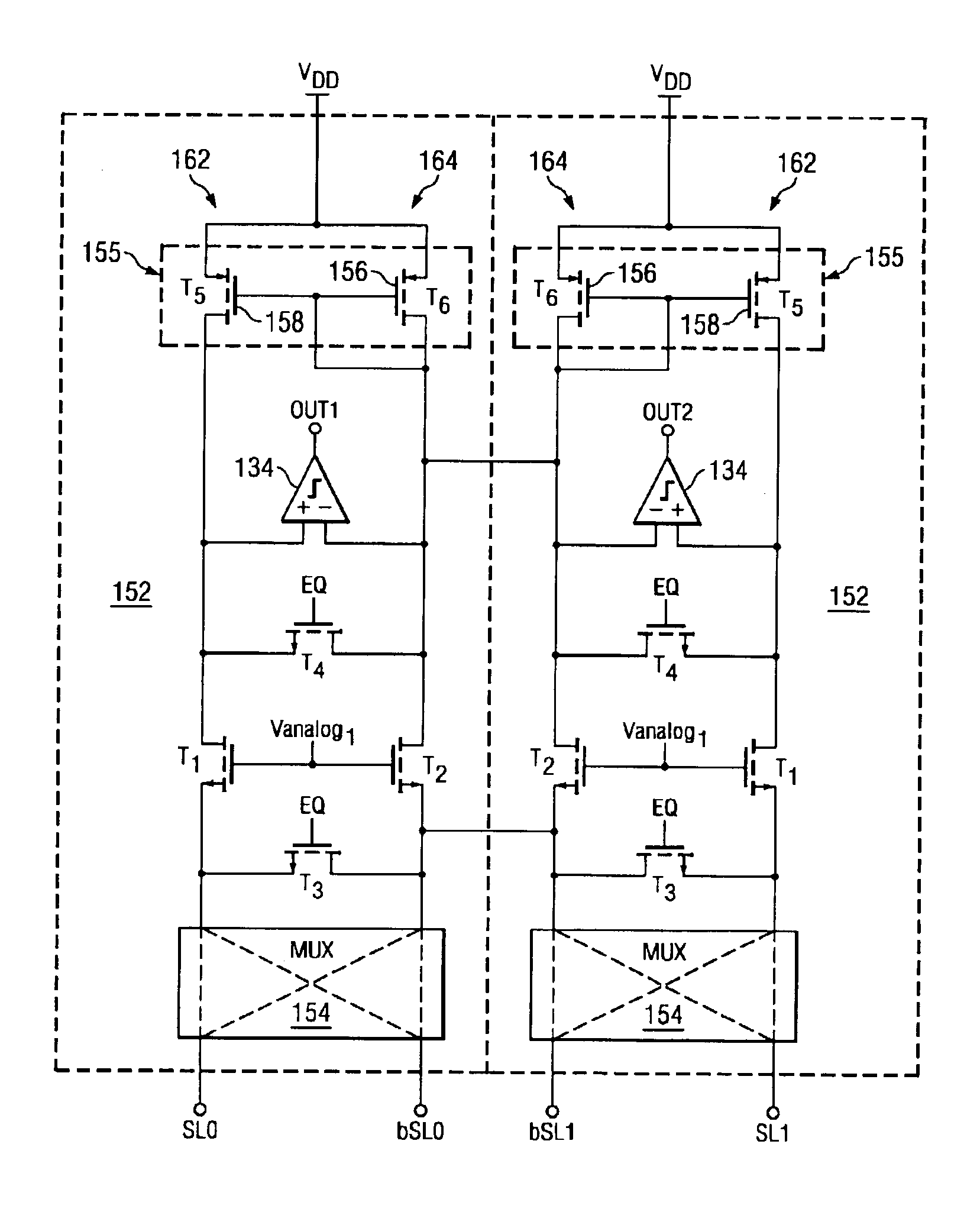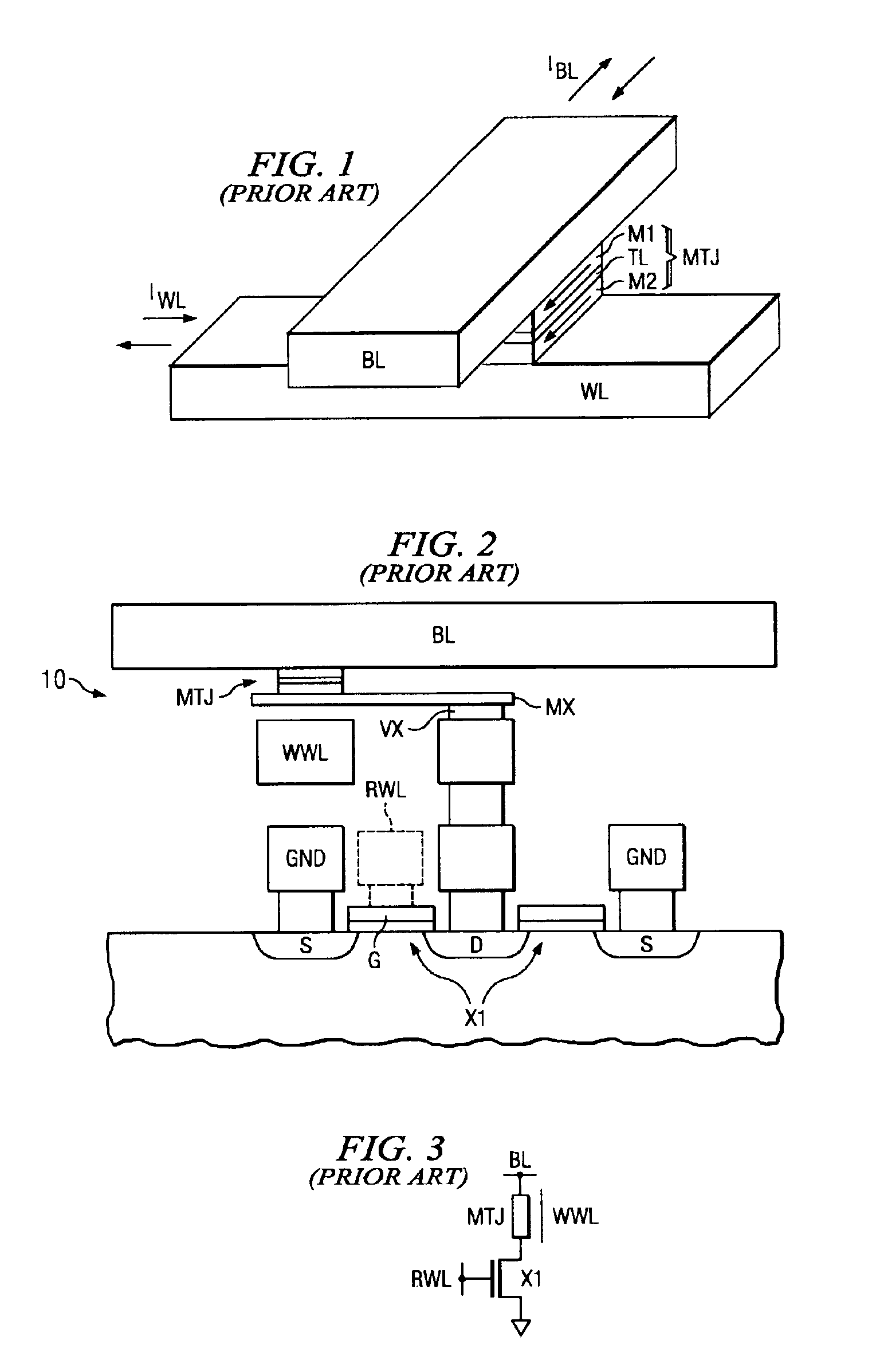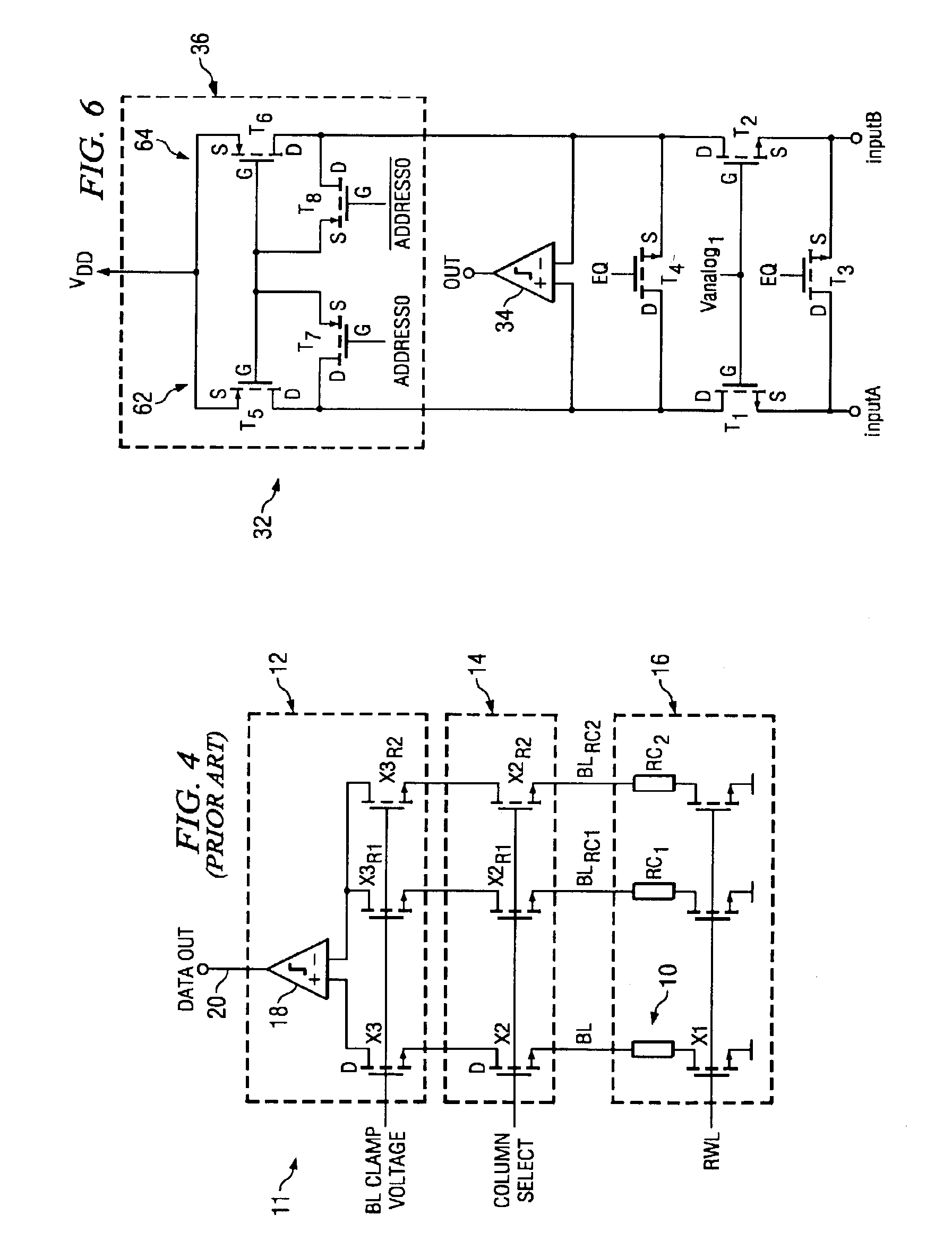Current sense amplifier
a current sense amplifier and amplifier technology, applied in amplifiers with semiconductor devices/discharge tubes, dc-amplifiers with dc-coupled stages, instruments, etc., can solve the problems of insufficient cell current for memory cells, difficult to read memory cells, and inability to provide memory cells with enough cell current, so as to increase the performance and speed of reading information stored in memory devices, improve the effect of performance and speed
- Summary
- Abstract
- Description
- Claims
- Application Information
AI Technical Summary
Benefits of technology
Problems solved by technology
Method used
Image
Examples
first embodiment
[0069]The cascode sense amplifier 40 design is advantageous in that the capacitive behavior is improved; therefore, the cascode sense amplifier 40 may provide some speed advantages. As in the first embodiment, the configurable current mirror 36 is advantageous because two current sense amplifiers 36 may be connected together, and the reference cell currents can be averaged.
[0070]Referring to FIG. 7, a capacitive load asymmetry within the current sense amplifier will be described. When transistor T5 is configured as a transistor diode, the capacitive load at the drain of T5 comprises the load due to the drain of T5, the gate of transistor T5 (via the connection by transistor T7), and also the gate load of transistor T6. The capacitive load at the drain of T6 comprises the load due to the drain of T6, no gate load because transistor T8 is not activated, and a small amount of drain load from T8. Therefore, there still remains a small amount of asymmetry of capacitance within the config...
embodiment 166
[0077]In FIG. 8, the multiplexer 154 adds resistance to the sensing path of the sense amplifier, which may reduce the sensed signal and may require a larger multiplexing device 154. To solve this problem, the multiplexer 160 may be disposed between the clamping devices T1 and T2 and the voltage comparator 134, as shown in the sense amplifier embodiment 166 of FIG. 9. This embodiment of the sense amplifier 166 is advantageous because a smaller multiplexer 160 may be used, and the sense signal is not reduced as much. As in the other embodiments, an equalizing transistor T3 may be coupled between the first input signal and the second input signal, and an equalizing transistor T4 may be coupled between the inputs of the voltage comparator, as shown. When used in a symmetric sensing architecture, preferably two or more current sense amplifiers 166 are utilized as a current sensing circuit, as described for the embodiment shown in FIG. 8.
[0078]In another embodiment 168 of the invention, t...
embodiment 168
[0079]Preferably, if signal V1 is on, then signal V2 is 0. Similarly, if signal V2 is on (or high) then signal V1 is 0. V1 and V2 are reference voltages and are preferably analog. For example, V1 and V2 may be Vanalog1 (see description for FIG. 6) or 0 V. A circuit (not shown) may be utilized to switch signals V1 and V2 to Vanalog1 or 0. This embodiment 168 is advantageous in that no additional multiplexing devices are required. An equalizing transistor T3 may be coupled between the first input signal SL0 and the second input signal bSL0, and an equalizing transistor T4 may be coupled between the inputs of the voltage comparator, as shown. As in the other hard-wired current mirror embodiments 152 and 166, when used in a symmetric sensing architecture, preferably two or more current sense amplifiers 168 are utilized as a current sensing circuit.
PUM
 Login to View More
Login to View More Abstract
Description
Claims
Application Information
 Login to View More
Login to View More - R&D
- Intellectual Property
- Life Sciences
- Materials
- Tech Scout
- Unparalleled Data Quality
- Higher Quality Content
- 60% Fewer Hallucinations
Browse by: Latest US Patents, China's latest patents, Technical Efficacy Thesaurus, Application Domain, Technology Topic, Popular Technical Reports.
© 2025 PatSnap. All rights reserved.Legal|Privacy policy|Modern Slavery Act Transparency Statement|Sitemap|About US| Contact US: help@patsnap.com



